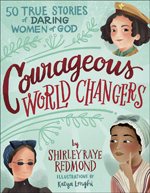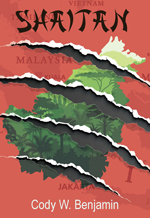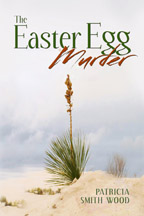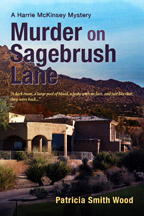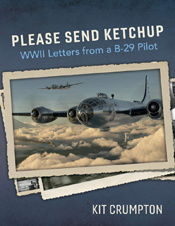Joan E. Berish began her first book after serving thirty-three years with the Florida Fish and Wildlife Conservation Commission. Retirement allowed her the time to examine decades worth of personal field journals and write her memoir. Fire and Fauna: Tales of a Life Untamed (Texas A&M University Press, 2019) reveals the author’s experiences in wildlife research and her “commitment to and passion for the natural world—and the fascinating people and animals who inhabit it.”
 What is your elevator pitch for Fire and Fauna?
What is your elevator pitch for Fire and Fauna?
Fire and Fauna: Tales of a Life Untamed recounts my exploits as a wildland firefighter and wildlife research biologist at a time when women were not common in those fields. The paths I traveled to become a wildlife biologist yielded misadventures that ranged from humorous to terrifying. I outran treetop flames as a helitack firefighter in New Mexico, spent a night in a small-town Georgia jail with a threatened species, and survived a near disaster in Florida when a small plane’s engine stalled as I was searching for a wandering, wee gopher tortoise. This memoir not only covers my career evolution and adventures, but also provides insights into both animal and human nature via stories of colorful characters.
When readers turn the last page of the book, what do you hope they will take away from it?
I want readers to glean a better understanding of wildlife research. In a nutshell, we field biologists gather information that game wardens use to enforce necessary protective laws and that wildlife managers use to enhance the habitat for specific animals or a suite of species. My hope is that my book will inspire young women and men to pursue careers in wildlife biology and will encourage folks everywhere to conserve our precious natural resources. Additionally, it is my belief that we all have stories to tell, and I hope my readers will think about documenting their own experiences, further highlighting the quirkiness of life.
When did you know you wanted to write your memoir?
I have always been both a bibliophile and a storyteller. Throughout my career as a wildlife research biologist, I seasoned my scientific and popular presentations with colorful anecdotes. I continually heard, “You need to write a book!” Alas, that isn’t possible when one is afield sometimes seven days a week gathering data. Moreover, I was generating scientific manuscripts for publication and dealing with the bio-politics of conserving a high-profile species in a rapidly developing state. I always thought that I might tackle writing a memoir when I retired.
Tell us about your path to publication.
After retiring from Florida Fish and Wildlife in 2014, I gave myself a year to settle into my new burrow here in the Land of Enchantment before starting my memoir in July 2015. The comprehensive draft started with perusing field journals from my wildland firefighting, grad school research, and Florida studies on gopher tortoises. I completed that first draft in 1.5 years and soon realized I needed a professional editor. Through a circuitous path that began with SouthWest Writers, I found an outstanding editor who had a strong understanding of animals and writing. At a 2017 Wildlife Society conference in Albuquerque, I met the then acquisitions editor for Texas A&M University (TAMU) Press. In 2018, I submitted my condensed and edited draft to both University of Florida (UF) Press and TAMU Press. UF Press wanted only Florida stories, but TAMU Press, located between Florida and New Mexico, wanted all my stories. As with scientific manuscripts, my draft was sent out for professional review and was officially accepted in fall 2018. I spent 2019 working with my TAMU Press editor to hone the book for its eventual publication in November 2019. I liken this four-year writing/editing/publishing journey to hiking on a long, uphill, switchback trail! And now I am learning the fine art of book marketing.
Is there a story in Fire and Fauna that you’d love to see play out in a movie?
Actually, I think a number of stories in my book would translate well to film, such as my firefighting adventures, my travels through South Georgia to interview local characters about indigo snakes, and the crazy (and often unexpected mishaps) I endured to gather data on a burrowing turtle, the gopher tortoise. Additionally, there are almost unbelievable (but true) stories of misadventures in the deserts of California and Mexico and on high seas in the Bermuda Triangle. On a humorous note, my hubby thinks Reese Witherspoon should play me as a young biologist. She successfully starred in the movie Wild based on the popular and adventurous memoir.
While writing your memoir, did you ever worry about revealing too much about yourself?
Overall, I have considered myself merely the raconteur of the experiences and stories that form my life and career. I have had no illusions of grandeur; moreover, many other colorful humans and critters populate my tales. Fortunately, I can laugh at own mistakes and foibles. I have an innate lack of physical coordination. After hearing a presentation about potential liability when writing and publishing memoirs, I was careful to use primarily first names only and was especially cautious in telling of being sexually harassed as a nuclear medicine research technician here in Albuquerque. For different reasons, I also tread carefully in telling about the break-up of my first marriage. Author Pam Houston (Deep Creek and Cowboys are My Weakness) talks of doing a final compassion read of one’s memoir to mollify stories of family members or friends. As far as revealing things about myself, there’s an old saying that my Florida wildlife colleagues and I liked to quote (imagine this with a strong Southern accent): “I don’t believe I’d told that if I was you!” That has rarely stopped me from telling a good tale!
What was your favorite part of putting this project together, and what was the most challenging?
Reaching into my memory bank and searching through field notebooks were the most enjoyable parts of this journey as I created the initial draft. Fortunately, the actual writing came easily to me, probably because I had waited a lifetime to tell these tales in book form. Alas, the editing was more challenging as I struggled to decide which stories to retain and which to delete. The most demanding tasks came in 2019 and had little to do with actual writing or editing. I have since sworn to never do these three things again: use other people’s photos because of the difficulty in tracking folks down and obtaining permission; use old photos that were frustratingly problematic to put into a modern publication format; and include an index. An index compiled by a professional was required—and cost me a small fortune. Despite the challenges, I am glad I persevered, and I feel quite fortunate to have TAMU Press as my publisher. I believe that having this highly-regarded, academic press publish my book has further enhanced its “field cred” (a biologist’s version of street cred).
Looking back to the beginning of your writing/publishing career, what do you know now that you wish you’d known then?
After writing and publishing many scientific manuscripts, I was not surprised by the challenges of editing and honing a draft. And I certainly was extremely lucky to find an outstanding publisher without waiting for years. However, I was not at all prepared for the demands of book marketing, especially in the time of Covid-19! I had set up a number of readings/signings at local indie bookstores, and those will have to wait. I was fortunate to attend two wildlife conferences specific to the conservation of tortoises, and I sold over 100 books total at the two events. Also, my local East Mountain community has been quite supportive; however, I feel I need to find additional ways to spread the word about my memoir. I am heartened that both scientists and non-scientists seem to be enjoying the book.
Where do you feel a memoirist’s responsibility lies, with the truth of the facts or with a perception about what occurred?
As a scientist, presenting happenings accurately was extremely important to me. And many of the details came from my field journals. But I also feel that merely reciting facts can diminish the stories and would make my memoir more like a scientific treatise (which was not my goal in this case). Therefore, my reactions and feelings were essential to fleshing out the tales. There are stories where I will never know what really happened (e.g., an ill-fated camping trip in the California desert), but I can certainly convey the anxiety and uncertainty.
What genre do you enjoy reading the most?
My office bookcase spans an entire wall and overflows with primarily nonfiction field/travel guides, travel essays, tales of adventurers, memoirs (especially by those who work or play in the great outdoors), books about other conservationists (e.g., Wild Lives by Lori Robinson and Janie Chodosh), delightful photographic and art books, and the list goes on…and on. I also enjoy select fiction, particularly stories set in the great outdoors or mysteries set in the West including works by Tony and Anne Hillerman, Craig Johnson, and C.J. Box. I’m currently reading Peter Heller’s wilderness thriller The River. And like many readers, I enjoyed Where the Crawdads Sing (both the Southern setting and the author’s background as a biologist). Canine, equine, and wildlife stories are also on my shelves. I have enjoyed Spencer Quinn’s whimsical books narrated by Chet, an endearing canine detective. Editing my own book during much of 2019 put me behind on my reading, but I look forward to indulging in the many treats that beckon from my bookcase.
Why do you think people like reading memoirs and biographies?
I think that reading about other people’s lives gives a sense of commonality, of belonging to the human race. Often, memoirs are quite inspirational and allow us to believe that we too can overcome adversity. In many cases, truth is indeed stranger than fiction—and some of my favorite memoirs/biographies read like the most exciting novels. We ask, “How did this person survive that?” Memoirs often highlight human compassion, fortitude, stamina, determination, dedication, and other desirable attributes. And some memoirs tell of almost unspeakable circumstances, either self-imposed or a result of fate. People who are going through such crises can feel connected and may even find hope in these books.
What is the best encouragement or advice you’ve received in your writing journey?
My memoir is divided into three parts, each with a title related to biology (e.g., Evolution of a Wild Biologist) and with a germane quote. Those quotes have helped guide my life and my writing—”Keep thou thy dreams…the tissue of all wings is woven first of them. Press on—persistence and determination alone are omnipotent. Life is either a daring adventure or nothing at all.”
Is there a common misunderstanding or fear about reptiles you would like to dispel?
Many folks and cultures embrace turtles and tortoises. And lizards are generally ignored, though some people may be fearful. But, not unexpectedly, snakes unfortunately conjure up fear and a host of misconceptions. Rather than list all the myths and misunderstandings about these maligned creatures, I will refer readers to a new book from a colleague of mine: Secrets of Snakes, The Science Beyond the Myths by David Steen. This slim book was also recently published by TAMU Press and is highly recommended, even for the ophidiophobic (those with a more extreme or even irrational fear of snakes). It is exactly what has been needed: an engaging, entertaining, and informative book that answers the questions people ask about snakes.
What writing projects are you working on now?
Right now, I am in the book marketing phase for my memoir. There may be additional literary journeys in my future. Time will tell. I love to write and have considered trying fiction; however, I know that finding a publisher can be daunting.
Is there anything else you’d like readers to know?
One of my mantras is related to our need for a home while still considering our fellow creatures: Save Space for Wildlife!
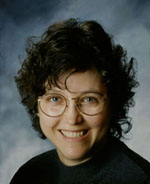 KL Wagoner (writing as Cate Macabe) is the author of This New Mountain: a memoir of AJ Jackson, private investigator, repossessor, and grandmother. Kathy posts to a speculative fiction blog at klwagoner.com and writes about memoir at ThisNewMountain.com.
KL Wagoner (writing as Cate Macabe) is the author of This New Mountain: a memoir of AJ Jackson, private investigator, repossessor, and grandmother. Kathy posts to a speculative fiction blog at klwagoner.com and writes about memoir at ThisNewMountain.com.
 What is your elevator pitch for Getting New Mexico?
What is your elevator pitch for Getting New Mexico? KL Wagoner (writing as Cate Macabe) is the author of This New Mountain: a memoir of AJ Jackson, private investigator, repossessor, and grandmother. Kathy posts to a speculative fiction blog at klwagoner.com and writes about memoir at ThisNewMountain.com.
KL Wagoner (writing as Cate Macabe) is the author of This New Mountain: a memoir of AJ Jackson, private investigator, repossessor, and grandmother. Kathy posts to a speculative fiction blog at klwagoner.com and writes about memoir at ThisNewMountain.com.
